The Trust offers financial assistance to individuals or groups to carry through restoration or improvement projects to completion. The Trust also invites enquiries about sponsoring one or more Awards.
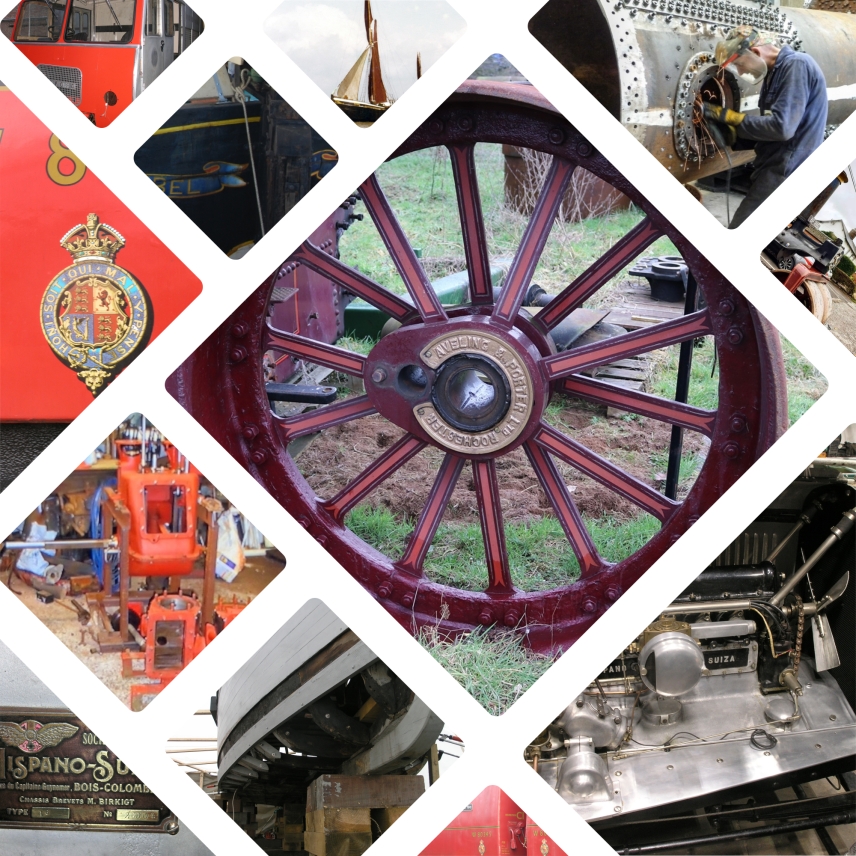
The National Transport Trust is the only national charity established to promote and encourage the preservation of Britain's unique transport heritage in all its forms – that is to say air, land (road and rail) and water (sea and inland). Each year the Trust invites nominations for awards to assist individuals and groups who are working hard to preserve items of importance to the nation's transport heritage. Awards generally come with a substantial financial lump sum which it is hoped will assist with making good restorations great.
This year's applications were many and varied, and the standards were, as ever, very high. Ably assisted by a group of volunteers from the Trust, projects have been visited, owners talked to and notes compared. The Trust would like to thank these volunteers, some of whom were assisting for the first time, who travelled the length and breadth of the land to see everyone.
Early in the new year the awards panel completed its assessments of all the entries received during 2019. The panel had its work cut out choosing these winners against some stiff competition. All those who put forward projects for consideration are to be congratulated for playing their part in preserving our transport heritage, and all those involved in restoration should consider applying for an award. Not only are the awards a great boost financially but they are great for boosting morale – especially when a restoration project has taken a long time and seems to be never ending! To those who were unsuccessful the Trust nevertheless commends you all for your efforts, and encourages you to keep up the excellent work.
Normally all the winners, plus VIPs, Trust Council and Trust members would gather at Brooklands to celebrate the achievements of the winners and formally present them with their certificates, but this year's ceremony, like so many other events across the land, has had to be postponed until such important events can be re-scheduled.
The National Transport Trust has chosen the following projects for awards in 2020:
Will Baker - 1959 Bedford Fire Engine 289 LTD
289 LTD is a 1960 Bedford TJ5 fire appliance supplied new to Lancashire County Fire Brigade and stationed at Morecambe from 1960 – 1967 then Carnforth from 1967 – 1975. It is bodied by Hampshire Car Bodies and fitted with a Hayward Tyler 500 GPM main pump. It is powered by the Bedford 6 cyl 300 cubic inch Petrol engine.
289 LTD was one of a batch of 10 Bedford’s ordered by Lancashire County Fire Brigade in 1959. In 1975 it was sold to a film company and was used for many films including two Norman Wisdom films and several episodes of David Jason’s own comedy “Good Fellaâ€, and many commercial television adverts of the time. There is only one other of its type surviving today.
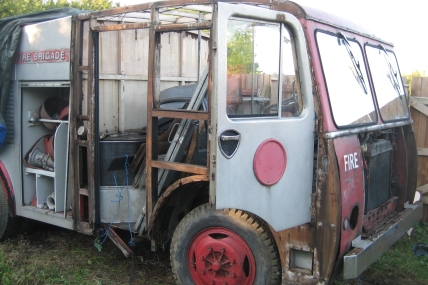
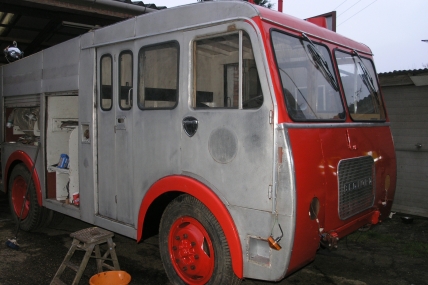
In 1977 the owner's father purchased the appliance for preservation and carried out work on the body and the pump which had suffered seizure during its film days. During the next ten years 289 LTD was preserved and rallied all over England. In the winter of 1978-9, 289 LTD was used by the local retained fire crew during the fireman’s strike to maintain cover for Peterborough and the surrounding area. The current owner was born in 1980 and grew up with the Bedford outside his bedroom window. The family sold the engine in 1987, and it eventually fell into severe disrepair before finally being saved by the current owner.
Since coming back into the family a vast amount of work has been undertaken. With typical coachwork of a mahogany timber frame skinned in steel and aluminium and with the timber in poor shape, Will has done a sterling job with both the timberwork and the metal outer. It is now in a terrific condition and will please and delight both the owner and the public who will see the little Bedford at shows and other gatherings.
Ipswich Transport Museum - 1951 Bedford WLB Coach
The folks at the Ipswich Transport Museum have something of a reputation for finding, saving and restoring items of local transport heritage interest and have, in the past, been recognised by the National Transport Trust for their efforts. Currently on the stocks and undergoing detailed work is a little gem in the shape of an early Bedford WLB coach.
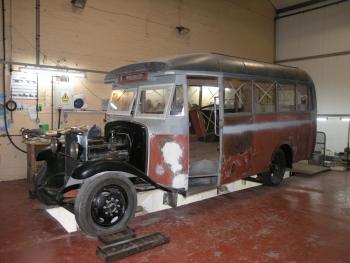
Prior to the late 1920s, Chevrolet sold their vehicles under the Chevrolet name, but from the early 1920s they adopted the name “Bedford†and this is an early example. The coach body work was by Waveney, a factory once in Oulton Broad just outside Lowestoft. The factory was in production until 1940. The coach was used locally before falling into disrepair and then being taken in hand by the museum and a small group of determined volunteers have made tremendous progress in turning something of a wreck into a very viable and handsome little period machine which will both take its place in amongst the already fantastic collection but also be used for road runs, fund raising and public events. It is therefore with much pleasure that an award can be made in recognition of the efforts of all those involved.
Further details of the museum and the collection can be found here.
Ash Faire-Ring - 1922 Thames Barge "Growler"
Up on the North Norfolk coast is a collection of small villages. In one of them is a field, a short distance from the high water mark. In the field is a large plastic tent arrangement, and under that large plastic tent arrangement a very talented and determined 17 year old is undertaking a rebuild of epic proportions in the shape of a 1920s Thames Barge, called “Growlerâ€. Although not as large as some barges (hence the name “Growler†which is a small iceberg), it is still a big thing, and its proud owner is no stranger to the painstakingly slow exertion required to re-plank and re-keel such a vessel. Work is well underway, and the proud owner is confident that it will soon be back afloat.
Growler was built in 1922 by the famous Barge builders White and Co, at Conyer Creek on the river Swale. They were famed for building the "Sara" which was the fastest barge ever built. It is said that Growler is a third sized version of her. Her designer was called Ted Hughes and he owned her until 1944. By this time her rig had been significantly cut down. She spent the war years moored at Benfleet yacht club and was then purchased by Eddie Snugg and rerigged as a Bermudian ketch. Growler was then used from 1945-67 as a club boat and many young people learnt to sail on her. In
1967 she was purchased by Mike De la Boltz and he restored her to a much more traditional standing gaff rig. He enjoyed many years with his family onboard before selling her in 1972. Little is known of what happened next until she was rescued by Gus Curtis and moved to a barn in Dedham in 1996, where she sat quietly before passing to Ash.
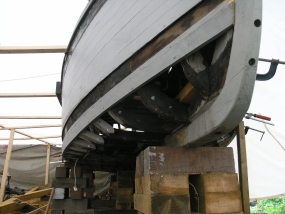
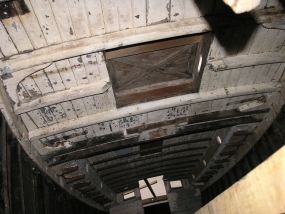
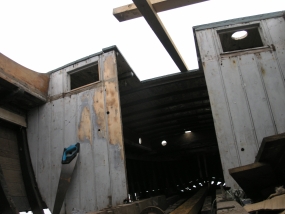
Ash has always loved classic boats, and was building his first boat with his father when he was just 10 years old. In July 2018, he received a phone call from a friend saying that they had come across the most beautiful sailing barge sitting in a barn in Suffolk. A month later he went to visit and after a meeting, the owner very kindly gave her to him. The rebuild started in June 2020 and by his own admission it has been a huge learning curve albeit incredibly rewarding. Under the instruction of shipwright John Owles, Ash has made significant inroads into the rebuild, replacing 23 planks, doubling the frames and fitting a new keel. Next steps are to procure a suitable engine and Ash intends to use the barge for the carriage of commercial cargo. Further information and updates on progress can be found here. A very worthy winner o Restoration Award.
Max Shepherdson - 1943 Pacific M26 Tank Transporter
In 1942 the US army realised that a new 40 ton semi-trailer tank transporter was needed with better off-road performance than the M9 24 small-wheel trailer, and greater capacity than the 30 ton 8 large-wheel Shelvoke and Drewry semi-trailers used by the Diamond T tractor unit. Designed by the Fruehauf Trailer Company of Detroit, Michigan, it was heavier than the Diamond T could manage so a companion M26 tractor was designed by the San Francisco-based Knuckey Truck Company.
When it could not keep up with the Army's demands, production was awarded to the Pacific Car & Foundry Co. of Seattle, Washington. The chain-driven 12-ton 6x6 M26 tractor was powered by a Hall-Scott 18 litre 6-cylinder petrol engine developing 240 BHP at 1200 RPM. Unusually, the tractor unit was fitted with both an armoured cab and two winches with a combined pull of 60 tons, allowing it to do battlefield recovery work.
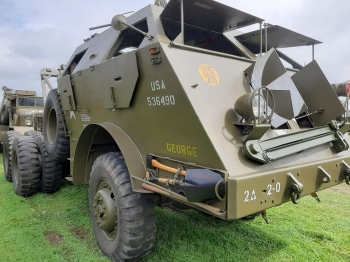
With its huge petrol engine with a propensity for shooting flames out of its exhaust, the M26 rapidly got the nickname "Dragon Wagon". After the war, some of them were bought as surplus and used to carry oversize loads such as transformers, locomotives and heavy equipment. Whilst impressive, most would shy away from owning such a thing in UK, let alone buying and repatriating one from Southern France, where it had been used in the construction of hydro-electric plants, then undertaking what has in effect been a nut and bolt restoration. It was planned to have it ready for this year's show season but obviously current circumstances have adversely impacted this hope. Its owner, Max Shepherdson is a seasoned rally campaigner who also has a Diamond T tank transporter, and a tank, in his sheds.
There is little on this machine that could be described as straightforward, but Max has painstakingly built up his example to perfection, and when it does finally get seen in public it will create huge interest - a fine testament to his vision and audacious tenacity in tackling such a restoration.
Gilbert Armour - Yorkshire Steam Wagon
This is a massive restoration of a 3 ton steam wagon. Several parts were rescued from a scrapyard in Leeds in the late 1960s by the late Tom Varley, from Lancashire. The parts came into the current owner's possession in 1998 and he basically started with front and rear wheels, rear axle with diff, some engine parts and a wasted boiler.
The Yorkshire Patent Steam Wagon Co. was a steam wagon manufacturer in Leeds, England. They produced their first wagon in 1901. Their designs had a novel double-ended transverse boiler. In 1911 the company's name was changed to Yorkshire Commercial Motor Co., but reverted to Yorkshire Patent Steam Wagon Co. in 1922. Steam wagon production ceased in 1937, and the company was finally dissolved in 1993.
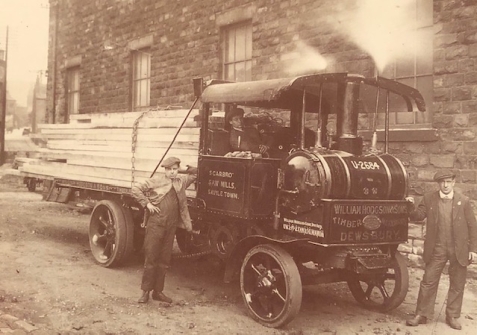
The novel double-ended, transverse-mounted, boiler was used to avoid problems of tilting when climbing hills. Internally it resembled a locomotive or Fairlie boiler with a central firebox and multiple fire-tubes to each end. In the Yorkshire though, a second bank of fire-tubes above returned to a central smokebox and a single chimney.
There are probably only about a dozen known Yorkshire wagons left in the world. There are 8 listed in the British Isles, 3 of which are 3 tonners including this one. Completing the bulk of the work himself, on a tight budget, Gilbert has fabricated a new chassis, which is now bolted up ready for riveting, front axle hubs and some steering gear. Work is currently underway on the engine.
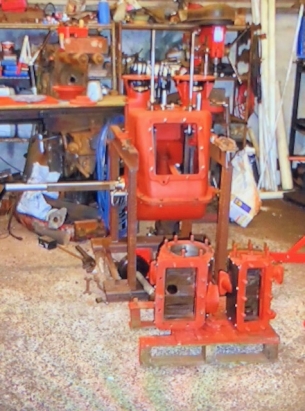
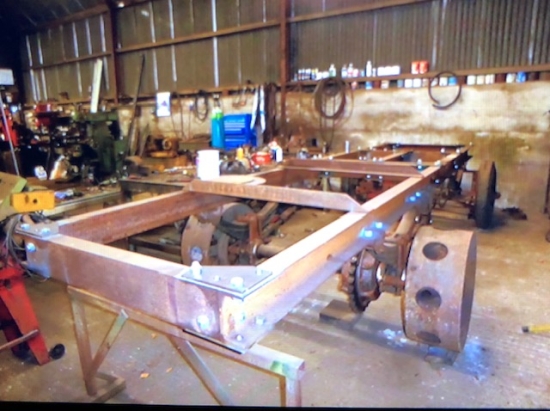
Gilbert started making these parts back in 1998 but it was put on hold for about 15 years, starting again in 2017. A completely new boiler has to be made, the drawings and submission to an insurance company are in progress. New gears, solid rubber tyres, drive chains, flat body, cab and many smaller parts are still to be made, but nonetheless Gilbert is confident of completion by 2022. This is 1 of only 3 known Yorkshire 3 ton wagons in the world, the other 2 are not currently in running order. Its restoration is both a credit to the determination and resourcefulness of its owner and thoroughly deserving of a Restoration Award.
Raybel Charters Community Interest Company - 1920 Thames Barge Raybel
During the three decades that followed her launch in 1920, sailing barge Raybel delivered many thousands of tons of cargo under sail. Then the world changed and diesel power came to the fore. Sailing barge Raybel was originally launched into the waters of Milton Creek, Kent – the name derived from twins, Raymond and Isabel, born earlier the same year to sailing barge owner G.F. Sully.
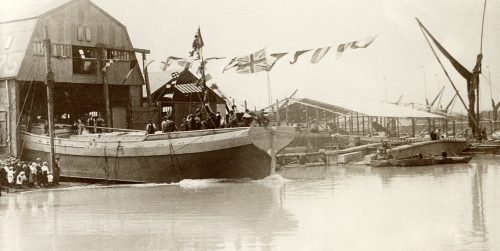
The shipping company known as "Sullys" had ordered a powerful coasting barge of some 90 feet from stem to stern post, with a cargo capacity of over 150 tons. Barge builders Wills and Packham delivered – and the Raybel quickly became the pride of Sullys' fleet. For over 50 years she carried cargoes between London and east coast ports, as well as the near continent – Holland, Belgium and France. During WWII Raybel was commandeered by the Admiralty and for several years worked from the Clyde, Scotland as supply ship to naval craft. By the early 1970s Raymond Sully was selling the last wooden barges the family still owned. Raybel Charters was founded in 1974 and Raybel passed into new ownership, though continuing to carry general freight such as wheat, starch, pitch and flour for a few more years. Her sails and rigging were fully restored by 1976. But the changing world meant that work for the Raybel would have to adapt. There was increasing interest in the gentle beauty and awe inspiring splendour of these sailing craft, which were already rapidly disappearing. This made possible several decades of varied work taking adults and children on a day's sail or a week of exploration. More recently the main hold has been host to educational activities, theatre, dining, hospitality, and promotional events. Now the challenge is to complete the circle of history by returning the Raybel to the work she was built for, the delivery of cargo under sail, whilst also creating a modern purpose for her, through new work that connects Thamesside communities with their shared estuary heritage. Inevitably maintaining and improving such a vessel is a constant and demanding endeavour undertaken by some very determined volunteers with a range of skills and experience. The result is breathtaking. The work is taking place at Milton Creek, Sittingbourne, the very waters into which she was launched just short of 100 years ago. Funding has been secured from the National Lottery Heritage Fund, Swale Borough Council, Kent Community Fund and Groundwork. The team expect to complete the necessary work and re-launch Raybel in time for her centenary in 2020.
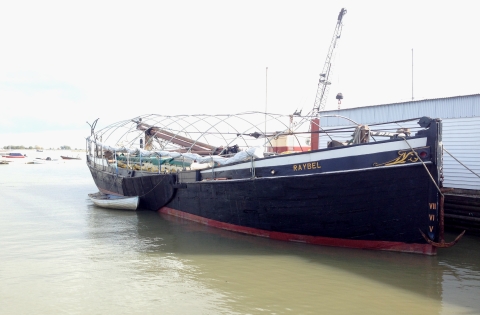
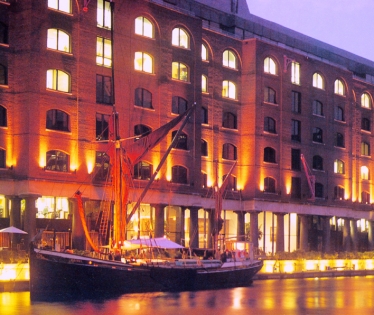
The restoration project will also be a key feature of the wider regeneration of Milton Creek in Sittingbourne, and a three year plan of community, cultural and heritage events, activities and volunteering will begin in autumn 2019. Nor are the team forgetting the skills needed to keep the heritage of Thames sailing barges alive, with training in traditional boat building and maintenance part of the plans. This will be just the start of the community-based work: once restored Raybel will become a valued asset for education, training and events, bonding communities the length of the Thames estuary, with each other and with their shared river heritage. As a result the Transport Trust are delighted to recognise this effort with a Restoration Award.
Commemorative Awards
The Commemorative Awards are named after key founding members of the National Transport Trust and represent the very best of the year's nominated projects:
The Alan Moore Award: West Somerset Railway Association - Small Prairie 4561 Steam Locomotive
Designed by G J Churchward and built at Swindon Works in 1924, Small Prairie 4561 is typical of the steam locomotives that would have run in the West Country and beyond between the 1920s and the mid-1960s. It spent 32 years of its working life on branch lines in Devon and Cornwall, before finally being withdrawn from service and scrapped in May 1962, having notched up 997,635 miles.
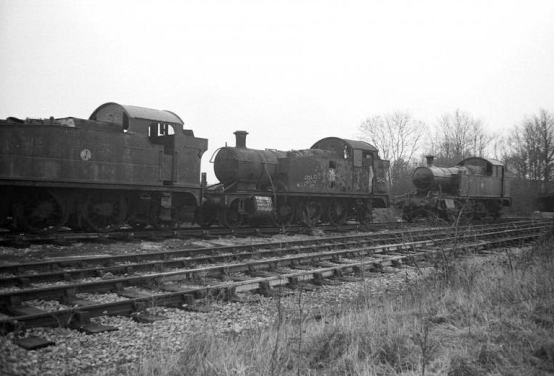
The next 13 years were spent languishing at Woodham Bros. scrap yard in Barry, South Wales. In 1975 it was purchased by a group from the West Somerset Railway (WSR) and transported by road to the WSR. After some repair work, the 4561 became a regular feature on the West Somerset Railway between 1989 and 1998, and was a popular part of the locomotive fleet. Since this time it has been stationed in the WSR restorative workshops awaiting repair.
In April 2018, a small group of WSR engineers, including the Head of Mechanical Engineering and the WSR Restoration Engineering Foreman, met with a group of trustees and confirmed their agreement that Small Prairie 4561 was the right locomotive to prioritise for restoration. That decision was endorsed by the full board of WSRA Trustees and it was agreed to re-start the restoration project in earnest. The bulk of repair work will be completed at the restoration works in Williton by a team of trained staff, volunteers and apprentices. It is a smaller locomotive than some of the others which are regularly run which makes it ideally suited to the West Somerset Railway, which mainly transports visitors and tourists along its 23-mile line.
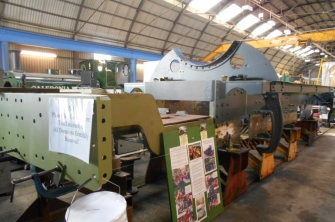
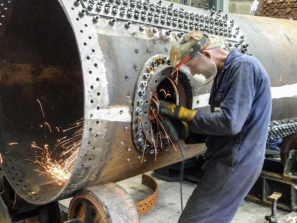
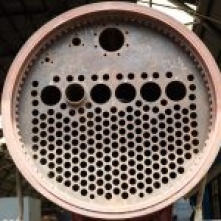
The Small Prairie offers a cheaper alternative to some of the larger steam trains as it is more efficient and designed for a smaller track. Furthermore, running their own locomotive would reduce the cost of renting steam trains for the line, in turn saving the charity £40,000 - £50,000 a year. The WSR is a 23 mile railway running through the heart of West Somerset. WSR is one of the largest tourist attractions in the area, bringing around 200,000 visitors each year. The organisation has become an integral part of the wider local community, providing employment and volunteering opportunities and contributing around £9 million a year to the local economy through tourism. West Somerset Railway Association is a community led, member driven, charitable association that supports the West Somerset Railway. The aim is to preserve and restore the heritage of the WSR, to fundraise, promote education, ensure community involvement, and to leave a legacy for future generations. The WSR operates heritage steam trains along its line as its core activity, but it also has a large number of other activities including educational visits, heritage restoration, museums, local events like the 1940s weekend, to steam galas and even Santa trains for the younger generation! Thus the restoration of this iconic locomotive will secure its place in the local and national transport heritage scene and is therefore thoroughly deserving of a restoration award.
Peter Allen Award: Daniel Jones - 1925 Aveling and Porter Steam Roller
The Aveling & Porter steam roller, No. 11296, was built in 1925 on an order from agents Becker and Co. of Amsterdam. The engine was exported to Koninklijke Maatschappij, a large road making contractor based in Wegenbouw, Utrecht (a district in The Netherlands). The engine worked for this company until 1962 when it was sold into preservation to the well known preservationist and architect G van de Pol. The roller than passed through a couple of new owners until the early 1980s when it was purchased by Jean Tilmans of As. Belgium, who owned it until 2015. Having spent its working life on the continent it was eventually repatriated to the UK in 2016.
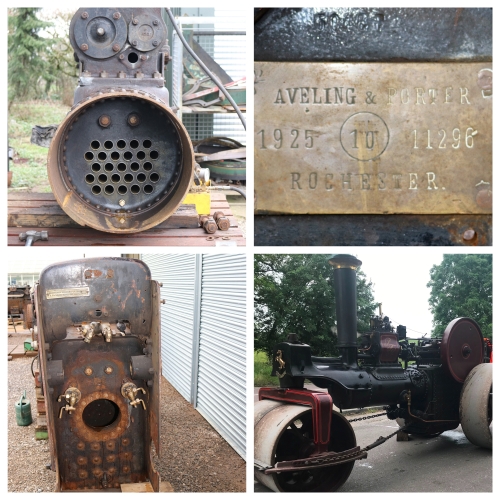 Enter at this point an 18 year old Daniel Jones of Pewsham near Chippenham in Wiltshire who decided not only to buy the engine, but to restore it himself, on a tiny budget by doing most of the extensive work himself. Dan originally applied for an award last year, at that point he was up to his armpits in heavy engineering. It was held over to be judged in this year's awards, but this did not slow down Dan one bit He redoubled his efforts and got the engine not only back into steam but even managed to take it to a few rallies, driving it there and bac, testament indeed to both his determination and his workmanship.
Enter at this point an 18 year old Daniel Jones of Pewsham near Chippenham in Wiltshire who decided not only to buy the engine, but to restore it himself, on a tiny budget by doing most of the extensive work himself. Dan originally applied for an award last year, at that point he was up to his armpits in heavy engineering. It was held over to be judged in this year's awards, but this did not slow down Dan one bit He redoubled his efforts and got the engine not only back into steam but even managed to take it to a few rallies, driving it there and bac, testament indeed to both his determination and his workmanship.
Obviously there will be little jobs that need doing over the coming months, but this stupendous effort is worthy of recognition by way of a restoration award.
The David Muirhead Award: The Railway Preservation Group - 1962 "Night Mail 85" Travelling Post Office
There are enthusiasts and there are enthusiasts, and the Railway Preservation Group are very definitely enthusiasts! Their pride and joy, a British Rail travelling posy office, comprising a complete rake of 5 full carriages complete with banks of pigeon holes. Once a vital part of the postal system, these travelling post offices (TPOS) ploughed north, south, east and west in a constant effort to provide communications in a pre-internet nation.
The last of the mail trains ran some 15 years ago and although many railway enthusiasts are aware of them, the general public have little or no idea of their existence, mainly because they ran at night. Up to 200 TPOS were involved, each filled with the very best and quickest sorting staff, picking up and dropping off mailbags whist travelling at speed in a constant race against time to get the post to its destination.
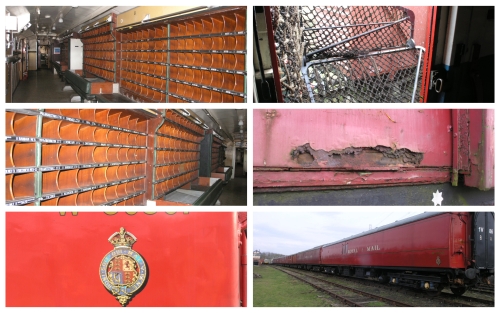
The group, ably led by chairman Philip Payne, come from all across the nation. Phillip travels most weekends all the way from Kent to strive to preserve this, the last of the breed. Internally the carriages are a time-warp whilst externally the next steps are to treat all of the carriages to new paintwork and transfers. Plans for the future include a mix of main and preserved line running as well as an aspiration to base the TPO in a location where it can educate and inform and properly tell the story of life before the internet.
Such vision and dedication to an important part of the national transport heritage is highly deserving of a restoration award.
The Ron Wilsdon Award: Nick Williams - 1924 Hispano Suiza Car
It was 3 years ago that a young man approached the trust with a nomination for an award for a most unusual vehicle - a 1924 Hispano-Suiza motor car. He had just purchased it and in doing so became the proud owner of a slice of motoring history. Hispano-Suiza was a Spanish automotive engineering company and, after World War II, a French aviation engine and components manufacturer. It is best known for its pre-World War II luxury cars and aviation engines. In 1923, its French subsidiary became a semi-autonomous partnership with the Spanish parent company.
Shortly after this the French branch, operating from their factory just outside paris, designed and built a handful of cars, without bodywork, which were exhibited at the 1924 Salon de Paris Automobile Show. This was one of them. Never registered, never bodied it eventually popped up at a Bonham's auction and Nick was determined to have it. And have it he did, moving heaven and earth to procure it and get it back to his workshop where he has spent the last 3 years scouring the globe and a varietly of online auction outlets to gather together all the things he needs to commence work that has effectively been “on hold†since 1924.
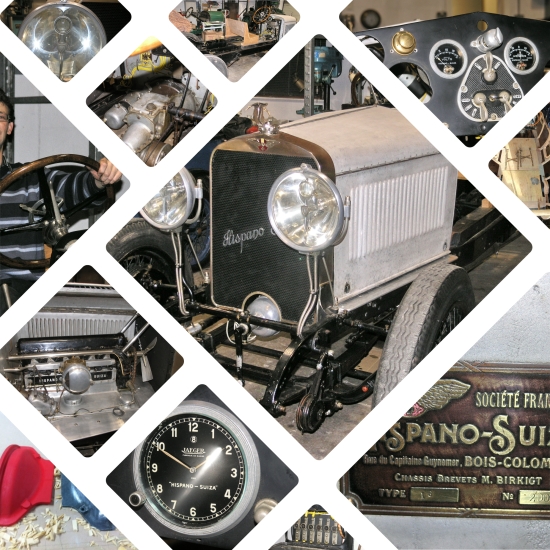
With bodywork now underway to Nick's demanding period design, it will not be long before this mighty motor car graces the automotive catwalk at presige events where it will wow the crowds just as it must have done back in 1924. For his single minded determination to see this amazing project through, Nick is thoroughly deserving of this award.
The National Transport Trust makes loans to groups, associations and individuals at advantageous rates for the restoration of artefacts - whether mobile or part of the infrastructure. Applications must be supported by a simple business plan which demonstrates the financial viability of the project. A sample business plan is available on request from the Treasurer.
The Trust does occasionaly make Awards for schemes which further the preservation movement. Again if you wish further information please contact the Treasurer.